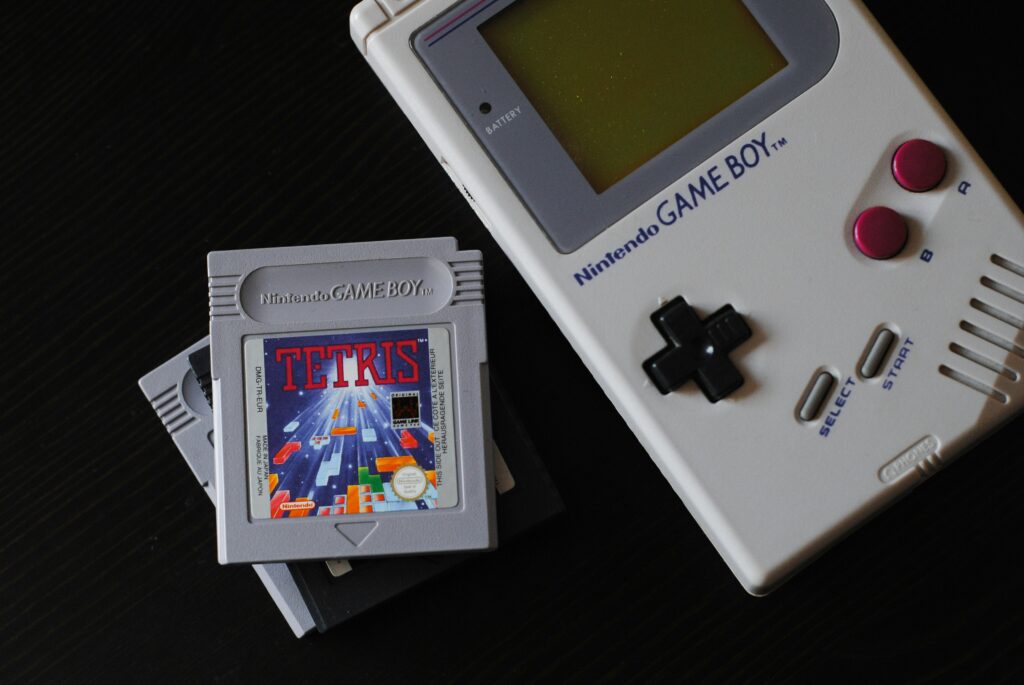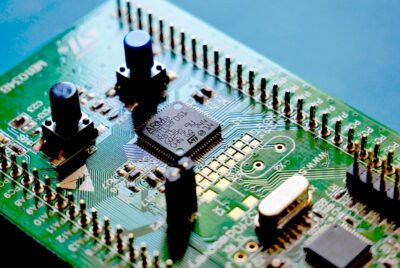What Is The Role Of Middleware In Game Development?
Hey there, fellow game enthusiasts! In our deep dive into “What Is The Role Of Middleware In Game Development,” we explore the intricacies of how middleware serves as an essential bridge in the creation of our favorite games. We unpack how these crucial software tools help streamline complex processes, enabling game developers to focus on delivering stunning graphics, seamless gameplay, and immersive experiences. Join us as we unravel the magic behind the scenes and discover why middleware is an unsung hero in the gaming world! Have you ever wondered what the role of middleware is in game development?
Middleware might sound like technical jargon, but it plays a crucial role in the complex world of developing video games. Without it, many of the hundreds of games we enjoy today, from indie pleasures to blockbuster hits, would not be possible. In this article, we’ll dive deep into what middleware is, why it’s so essential in game development, and how it impacts everything from design to player experience.
Understanding Middleware
So, let’s begin with a basic question: what exactly is middleware? At its core, middleware serves as the intermediary layer between software applications and the operating system or hardware. Think of it as the glue that binds different software tools and processes together.
In simple terms, middleware helps developers save time, reduce costs, and enhance the quality of their games. It provides pre-built solutions for tasks that would otherwise be extremely complex and time-consuming to develop from scratch.
Categories of Middleware
Middleware can be broadly classified into several categories, each serving specific aspects of game development. Let’s look at these categories and the typical tasks they handle:
| Category | Function |
|---|---|
| Graphics | Rendering, shaders, lighting, and visual effects |
| Audio | Sound effects, music, voice acting, and audio processing |
| Physics | Simulating realistic physics interactions and collisions |
| Artificial Intelligence (AI) | Creating intelligent behaviors, pathfinding, and decision-making |
| Networking | Handling online multiplayer, data synchronization, and communications |
| Input | Managing input devices such as gamepads, keyboards, and mice |
| User Interface (UI) | Building and managing in-game menus and HUDs |
| Analytics | Collecting and analyzing player data and game metrics |
Each of these middleware types offers specialized tools and libraries that developers can integrate into their games, making the development process faster and more robust.
Why Is Middleware Important in Game Development?
You might be asking, “Why can’t developers just create everything from scratch?” It’s a valid question, and here’s the answer: developing all aspects of a game in-house from the ground up is not only time-consuming but also requires a vast array of expertise and resources.
Accelerating Development
One of the primary reasons for using middleware is to accelerate the game development process. Middleware provides developers with pre-built solutions that are tested, optimized, and ready to use. This allows the team to focus more on the unique aspects of their game rather than reinventing the wheel for common functionalities.
Reducing Costs
Creating every component of a game in-house would require hiring experts in various domains—each with their own set of skills. This is incredibly costly. Middleware allows smaller teams to achieve the same level of quality as larger teams at a fraction of the cost. It’s like hiring an expert consultant whose work is already validated by other projects.
Enhancing Quality
Quality is another crucial aspect. Middleware tools are designed to meet industry standards and are continually updated to fix bugs and optimize performance. By using these tools, developers can ensure higher quality and more stable end products.
Fostering Innovation
When the basics are already taken care of, developers can focus on what makes their game unique. Middleware frees up valuable time and resources, allowing creative teams to innovate and experiment with new ideas that can set their game apart from the competition.

Types of Middleware in Detail
Let’s delve deeper into some specific types of middleware that play essential roles in game development.
Graphics Middleware
Graphics middleware is perhaps one of the most critical types of middleware in game development. This software helps to render scenes, create visual effects, and optimize graphics performance. Popular graphics middleware solutions include Unity, Unreal Engine, and CryEngine.
Audio Middleware
Sound is a critical component of the gaming experience, from background music to complex sound effects and dialogues. Audio middleware like FMOD and Wwise help to manage these audio elements efficiently. They provide tools for mixing audio, adding real-time effects, and creating immersive soundscapes.
Physics Middleware
Physics engines simulate realistic interactions within the game world. They can handle collisions, ragdoll physics, and fluid dynamics, among other things. Middleware like Havok and PhysX are staples in many game development projects for creating realistic physical interactions.
Artificial Intelligence Middleware
AI middleware is used to create intelligent behaviors in non-playable characters (NPCs). Solutions like RAIN and GOAP help in developing complex decision-making processes, pathfinding, and dynamic interactions, making the game world more lifelike and engaging.
Networking Middleware
For games that offer multiplayer functionalities, networking middleware is indispensable. This type of middleware manages data synchronization, lag compensation, and player interactions over the network. Popular options include Photon and SmartFoxServer.
Input Middleware
From gamepads to VR controllers, input middleware ensures that player inputs are accurately captured and processed. Middleware like Rewired and InControl offers customizable solutions for different types of input devices.
User Interface (UI) Middleware
User interface middleware simplifies the creation and management of in-game menus, HUDs, and other visual elements. Solutions like NGUI and Coherent GT help developers build interactive and visually appealing interfaces quickly.
Analytics Middleware
Understanding player behavior is key to improving any game. Analytics middleware collects, processes, and visualizes gameplay data. Tools like Unity Analytics and GameAnalytics provide insights that help developers make informed decisions about game design and user experience.
How Middleware Shapes the Development Process
Middleware deeply impacts various stages of game development, from initial concept to final release. Here’s how it integrates into the development workflow.
Concept and Pre-production
During the concept and pre-production phase, developers need to establish the scope of the game and the technologies they will use. Middleware selection is a crucial part of this planning. The right choice of middleware sets the foundation for a smoother development process and helps estimate the required budget and timeline.
Prototyping
In the prototyping phase, middleware enables rapid development and testing of game ideas. Since middleware solutions often come with comprehensive libraries and tools, developers can quickly build prototypes to validate their concepts without investing significant time in creating core functionalities from scratch.
Production
During the production phase, middleware plays a pivotal role in accelerating development. Developers constantly rely on middleware tools for rendering graphics, processing audio, and managing physics simulations. Middleware solutions also facilitate team collaboration, as many come with built-in support for version control and other project management features.
Testing
The testing phase benefits immensely from middleware, particularly those with debugging and profiling tools. Middleware can help identify performance bottlenecks, memory leaks, and other issues more efficiently than in-house solutions. This leads to a more stable and polished end product.
Post-production
Even after the game is released, middleware continues to be valuable. Analytics middleware provides insights into player behavior and game performance, which can guide updates and future developments. Networking middleware is crucial for maintaining and expanding multiplayer features, keeping the game engaging for players.

Case Studies: Middleware in Action
To understand the real-world impact of middleware, let’s look at a few case studies.
Fortnite and Unreal Engine
Epic Games’ Fortnite is a prime example of middleware success. By using their own Unreal Engine, Epic was able to focus resources on game design and mechanics rather than core engine development. This middleware allowed Fortnite to quickly scale and adapt, contributing to its massive success.
Dead Cells and Haxe
Motion Twin, the developers behind Dead Cells, utilized the Haxe programming language and the Heaps graphics engine. This choice of middleware facilitated rapid iteration and ensured high performance, crucial for the game’s fluid combat and intricate animations.
The Witcher 3 and Wwise
For The Witcher 3: Wild Hunt, CD Projekt Red used Wwise for audio middleware. This allowed them to manage the game’s complex soundscape more effectively, delivering an immersive auditory experience that contributed to the game’s acclaim.
Choosing the Right Middleware
Selecting the appropriate middleware can significantly impact the success of a game development project. Here are some factors to consider:
Project Scope
The scope of your project will dictate the complexity of the middleware you need. A simple 2D platformer might not require as robust a solution as a large-scale MMORPG.
Budget
While middleware can save money in the long run, some solutions come with upfront costs or licensing fees. Balancing the initial investment against the potential time and cost savings can help in making an informed decision.
Compatibility
Ensure that the middleware is compatible with your existing tools and workflows. For instance, if your team predominantly uses a specific programming language, make sure your chosen middleware supports it.
Support and Community
A strong support system and active user community can be invaluable. Middleware solutions with comprehensive documentation, active forums, and responsive customer support are generally safer bets.
Performance
The middleware’s performance can significantly impact the final product. Testing different options to gauge their efficiency and reliability under various conditions can lead to a better choice.

Future Trends in Middleware
As game development continues to evolve, so does middleware. Here are some trends we anticipate:
Increased Integration with AI
AI is becoming more influential in game development, and future middleware solutions will likely offer more advanced AI capabilities. This can include better pathfinding, procedural content generation, and more complex NPC behaviors.
Cloud-Based Middleware
With the rise of cloud computing, more middleware solutions are moving to the cloud. This shift enables features like real-time collaboration, easier scaling, and more robust data security.
Virtual and Augmented Reality
As VR and AR technologies advance, middleware tailored for these platforms is becoming more sophisticated. These tools help developers create more immersive and interactive experiences.
Cross-Platform Development
The demand for games on multiple platforms—PC, console, mobile—continues to grow. Middleware that supports cross-platform development can streamline the process, allowing developers to reach wider audiences more efficiently.
Enhanced Analytics
Future game analytics middleware will likely offer deeper insights through machine learning and big data analysis. This will enable developers to understand player behavior better and make data-driven decisions to improve their games.
Conclusion
Middleware is more than just a convenience; it’s a critical component of modern game development. From accelerating the development process to reducing costs and enhancing the quality of games, middleware offers a plethora of benefits that can’t be ignored.
By understanding what middleware is and the crucial roles it plays, we can better appreciate the intricate processes behind our favorite games. As the gaming industry evolves, middleware will continue to adapt and offer new, innovative solutions that push the boundaries of what’s possible in game development. So next time you play a game, remember that there’s a good chance middleware is making your experience smoother and more enjoyable.




